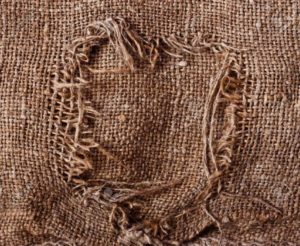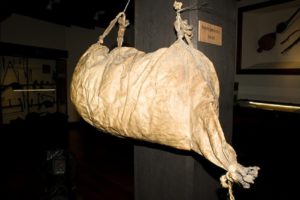The Ministry of Jesus in Galilee
Mark 1:16—8:30
A New King (1:16—3:6).
Kingdom is Near (1:15)
Popularity (1:16-45).
Conflict (2:1—3:6).
Forgiving and Healing a Paralytic (2:1-12).
Eating with Tax Collectors and Sinners (2:13-17).
Fasting (2:18-22).
It would seem that what follows occurred at around the same time as eating at Levi’s house with sinners and tax collectors.
Pharisees were known for fasting.
They fasted twice a week (Luke 18:11-12).
Oftentimes they would do so by making a big show of it (Matt. 6:16).
According to the Mishna (oral tradition c. AD 200), they fasted on Mondays and Thursdays.
The OT only required fasting on the Day of Atonement (Lev. 16:29-31), but it was seen as a means of greater devotion (e.g. Moses, Elijah, Daniel, Esther).
The disciples of John also fasted, though it is not clear when or how often.
Jesus and His disciples may have been eating with these sinners & tax collectors on a Monday or a Tuesday.
It must have been unusual for Jesus’ disciples not to fast.
Curiously, they did not ask if Jesus fasted.
It was an odd team-up for the disciples of John and the Pharisees to come together (2:18).
This does not mean they agreed on everything, but they shared in at least this one practice.
It could be the Pharisees who convinced the disciples of John to go with them to Jesus on this matter.
Jesus used three illustrations to answer their question (2:19-22).
All three illustrate the inappropriateness of fasting at this time.
The first is concerning somberness at a happy occasion.
The other two are about mixing the old with the new.
Fasting at a wedding feast (2:19-20).
Wedding celebrations would last a week in their culture.
It was a happy time of feasting and festivities.
Jesus likens His disciples to the friends of the bridegroom, or the groomsmen.
This makes Jesus Himself the bridegroom.
John the Baptist described Him in this way, while John is the happy friend of the bridegroom. We might call him the best man (John 3:29).
At such a joyful time, not even a Pharisee would fast twice that week.
But then Jesus alludes to His death for the first time, and the only time in His Galilean ministry here in Mark—Jesus knew why He was here.
This allusion passed by so quickly, the disciples may not have even noticed it.
The wedding feast would be done, and the disciples would be expected to fast then.
It is unclear if they would fast twice a week as the Pharisees do, but there is no indication of the frequency of their fasting—they do fast (2 Cor. 11:27).
Also Jesus gave commands on how one should fast, “when you fast” (Matt. 6:16-18).
Sewing together old and new cloth (2:21).

Have you ever noticed that clothes fit a little differently from when you tried them on at the store compared to after you washed them? Our clothes shrink a little bit.
Jesus is talking about when one sews on a patch.
If you sew on a cloth patch that hasn’t been washed (and shrunk) before, you’ll just make the tear worse when you do wash the patched cloth.
It is inappropriate to do this, just as it is inappropriate for His disciples to fast at such a happy time.
New wine in new wineskins (2:22).
New wine is what we might call grape juice—not yet fermented.
Jesus here is talking about the process of fermentation.
Fermentation is a biochemical reaction. What are some things that are required for fermentation?
An enclosed container.
Room to expand.
When you put that new wine into a wineskin, it will make the wineskin expand.
Ancient wineskins were goat skins that were removed from the goat as one piece and sewed up to make it airtight.

The older a skin gets, the less pliable it becomes, the less it is able to accommodate the expansion that comes with fermentation.
An old wineskin is also already stretched to its limit since it has already been used to ferment wine.
As a result, the old skin will burst and your batch of wine is ruined, not to mention the skin.
It is inappropriate to put new wine in old wineskins just as it is inappropriate for Jesus’ disciples to fast at this time.
Can you think of other innocuous but inappropriate things like these that might better relate to our time and culture?
Talking about wine in this manner is a curious choice for our Lord.
If all alcohol were totally and completely sinful, do you think Jesus would have used this illustration?
Surely there are appropriate uses for alcohol; primarily for medicinal purposes (Prov. 31:6-7; 1 Tim. 5:23).
Such can be abused, and often is in our society.
Alcoholic beverages today are not the same as alcoholic beverages back then—the alcoholic content today is much higher than it used to be.
Do keep in mind that drinking strong drink is sinful (Hab. 2:15; Prov. 23:29-35). What is the purpose of drinking strong drink?
Some might argue that the cup in the Lord’s Supper is or could be alcoholic, but any time it is mentioned in the NT, it is called the “cup” or the “fruit of the vine,” never wine which, in the NT, is an ambiguous word concerning alcoholic content.
Conflict has increased between Jesus and the religious elite of His day.
He has forgiven sins as only God can but proved it with a miracle.
He has associated with the outcasts of society.
Now He has bucked a tradition of fasting among the devout.
Next we will see Him buck the traditions developed around the Sabbath Day.

